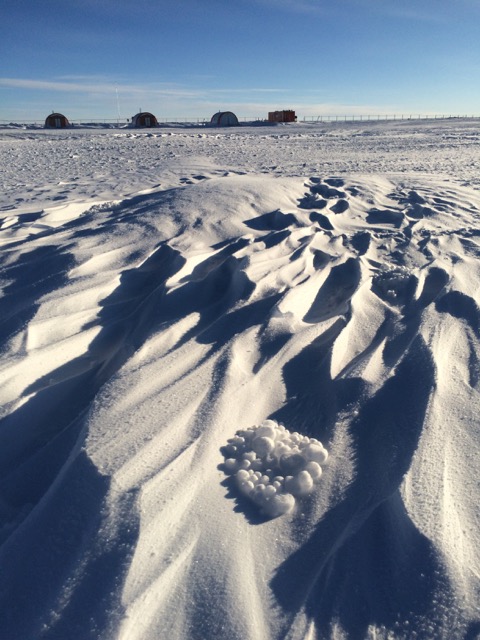Snowball 'Tumbleweeds' Blow Across Antarctica

Tumbleweeds may be iconic symbols of the American West, but regions around the world have their own versions of the wind-blown plants — even Antarctica.
Antarctica's "tumbleweeds" look more like snowballs, but like their western namesake, they are created by the wind. Known as "yukimarimo," the wind-made snowballs were first discovered in 1995 by Japanese researchers who named the objects using the words "yuki," meaning "snow," and "marimo," meaning "moss balls." Yukimarimo develop when a rapid drop in temperatures causes a layer of frost to form on the snow. Winds pick up the frost's ice crystals and form them into balls that then tumble across the Antarctic landscape.
The European Space Agency (ESA) recently shared an image of this natural snowball phenomenon, when the yukimarimo appeared near the Concordia Research Station on the Antarctic Plateau. [Images: Life at Antarctica's Concordia Station]
A team of researchers currently working at the Concordia Research Station — a permanent, year-round, French-Italian outpost — just passed the six-month mark of their deployment, according to ESA officials. On May 3, the researchers experienced their last sunrise and will work through Antarctica's dark winter until the September equinox, the agency said.
The extreme conditions of darkness, harsh cold and isolation in Antarctica are a "unique testing ground" for what humans will endure on missions to the moon or Mars, according to ESA officials.
"Concordia offers ESA a place to conduct research on people living far away from civilization in extreme conditions — much like spaceflight," Jennifer Ngo-Anh, ESA's head of human research, said in a statement.
Original article on Live Science.
Sign up for the Live Science daily newsletter now
Get the world’s most fascinating discoveries delivered straight to your inbox.











